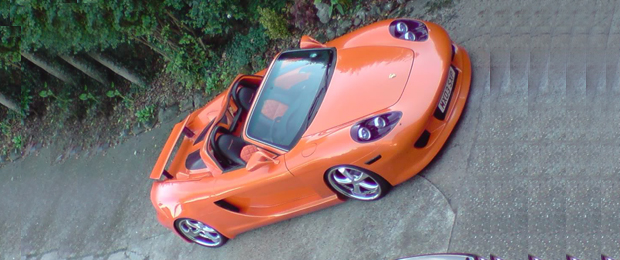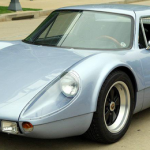 After developing working plans for the 1999 LeMans road-racing season, Porsche was caught left-footed when FIA and ACO, the two international governing bodies of road-racing, made some rule changes that directly impacted Porsche’s original 911 GT1/LMP1-98 race cars.
After developing working plans for the 1999 LeMans road-racing season, Porsche was caught left-footed when FIA and ACO, the two international governing bodies of road-racing, made some rule changes that directly impacted Porsche’s original 911 GT1/LMP1-98 race cars.
One of the key changes made by the FIA/ACO dealt with turbocharging and Porsche, something near and dear to the race developer’s heart. Porsche, you see, had planned to use a blown version of its flat-six (the same engine that had been around the automaker’s parts bin for years; early on it was air-cooled and later it was water-cooled; either way, it was a powerful engine that gave other auto developers fits.).
Meantime, because of the changes forced upon it, Porsche developed a new engine for the race car, now the Carrera GT. The powerplant was to be a V10 engine. Unfortunately the development team, between the changes that FIA/ACO had pushed and the new engine planned for the Carrera GT, release was pushed well into the year 2000.
It may seem like Porsche was the king of the air-cooled/water-cooled/rear-mounted flat six, but that wasn’t exactly true. Undoubtedly, it was the king of the six-cylinder mountain, to be sure, but what many folks never realized was that deeply in the background there was a group of Leipzig engineers that had been working on a V10 for the “Footwork Formula One” team.
This engine was prototyped as early as 1992 and while the project was pushed to a backburner there were those who remembered the V10 and suggested that it be brought forward to power the Carrera GT, available only from 2004 to 2006 at a cost of well over $440,000. The powerplant now took center stage and the development team upped its size to 5.7 liters in the nearly 1,300 that were built.
Testing was begun on the Carrera about the middle of the year, but, you had to know this was a sleek bubble that wouldn’t last. The reason is that, folks involved at the time, really wanted to be elsewhere. They saw their future in the lucrative SUV world, not the costly racing world and so Porsche pulled the plug quickly only to get back into the deep end of the pool, this time, though, with the the Porsche/VW Cayenne.
Meantime, a diehard group of engineers continued working on the Carrera GT to the point that they did make it to production debut in 2004 and while about 1,300 were built, imagine the extra stream of money they brought into the corporate coffers due to the happy force of serendipity (good things happening when you don’t expect them).
A full production run of 1,500 had been planned but due to problems with airbag rules — or so Porsche claims — only the 1,300 were made and of that about half were sold in the US.
Even though roughly 650 — give or take — of the Carrera GTs made were sold in the US, with the rest slated for Europe and other venues, those who were lucky enough to obtain one found they had a 5.7-liter V-10 that cranked out about 604 horsepower that would do 0 to 60 in about 4 seconds. The top-end speed was claimed to have been
205. Real-world tests better the 4-second 0 to 60 run by better than .5 seconds and which managed a 0 to 100 run in just under 7 seconds.
In looks, the Carrera GT sported dual side intake scoops and large front-end ducts for huge cooling for the V-10. The Carrera GT, whose engine was a double overhead cam V-10 with four valves per cylinder and variable valve timing for optimum scavenging. The exhaust valves were sodium-cooled. It also sported an experimental carbon Silicon carbine ceramic brake system. These systems can be guaranteed never to fade.
Like other Porsches based on this body style, the rear wheels were larger than the fronts (20/19) and it could handle. The interior was also nice.
When it comes to kit cars, there are generally several routes taken by the major kit providers. Of course, there’s the good old Toyota MR2 frame that’s heavily (it would have to be heavily modified to even begin to look like the Carrera GT) and then there’s the Pontiac Fiero, which, while would also need extensive modification.
You will have to be careful of not only the kit suppliers, but also of the frame used as a frame that has been knocked about and which may have come from a wreck could also be bent in places that just won’t straighten out right and the result will be a horror show on wheels that will leave you short about $5,000 for the frame and maybe another $20,000 for the work. Plus, there’s the matter of the engine and tranny mods that will have to be made. Of course, you can try to shoehorn in an 8 and five-speed or six-speed and then set up the rear and front end so that they match the original.
It can and has been done but again, the usual caveats extend:
- Check the firm you are planning to use
- Check any references you get
- Check the subframe they are planning to get or which you are going to obtain
- Check the quality of the kit itself
- Make sure that the work is done by the pro’s, unless you think you have the skill to do it yourself.
Image: pistonheads.com






Leave a Reply
You must be logged in to post a comment.